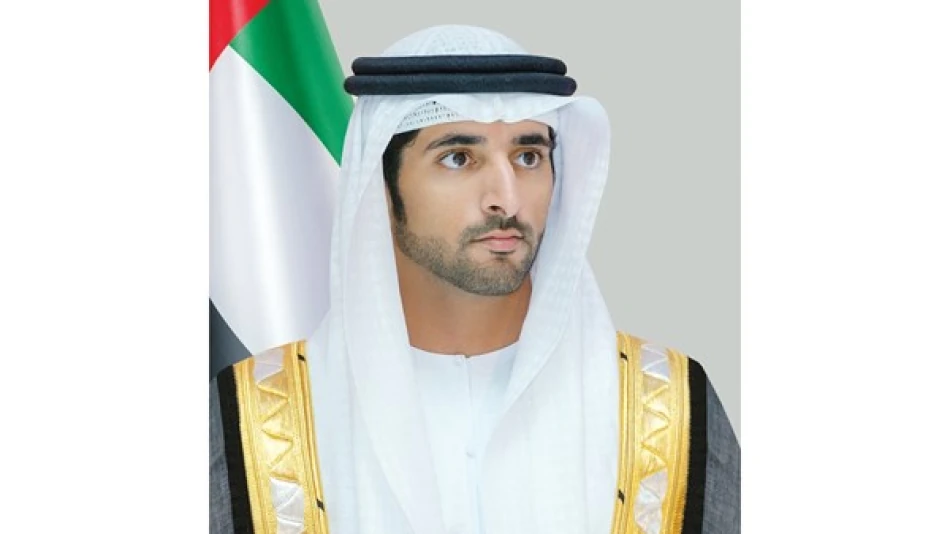
Sheikh Hamdan Launches 'Rashid Villages' Initiative to Honor Late Sheikh Rashid's Humanitarian Legacy
Dubai Crown Prince Launches Global Village Initiative to Honor Late Brother's Humanitarian Legacy
Dubai's Crown Prince Sheikh Hamdan bin Mohammed bin Rashid Al Maktoum has unveiled an ambitious humanitarian project that will build model villages worldwide, starting with Kenya. The "Rashid Villages" initiative marks the 10th anniversary of his late brother Sheikh Rashid bin Mohammed's passing and represents a sophisticated evolution in international aid—moving beyond temporary relief toward comprehensive community transformation that includes housing, education, healthcare, and economic empowerment.
Beyond Traditional Aid: A New Model for Development
The initiative signals a strategic shift from conventional charity toward sustainable development models that mirror successful approaches seen in Singapore's public housing programs and Rwanda's model villages initiative. Rather than providing temporary assistance, Rashid Villages aims to create self-sustaining communities that break cycles of dependency—a approach that development economists increasingly advocate as more effective than traditional aid models.
Sheikh Hamdan emphasized that the project embodies values instilled by his father, UAE Vice President and Dubai Ruler Sheikh Mohammed bin Rashid Al Maktoum, stating that his late brother "was a knight of goodness as he was a knight of the fields, leaving a deep humanitarian impact that reflects noble values."
Kenya Pilot: Testing Ground for Scalable Solutions
Infrastructure and Scale
The first village in Kenya will span 72 acres and serve approximately 1,700 people—a scale that allows for meaningful community formation while remaining manageable for evaluation and refinement. The comprehensive design includes fully furnished homes, a mosque, a 500-person multipurpose hall, commercial spaces, paved roads, and renewable energy infrastructure powered by solar panels.
Economic Empowerment Strategy
The project's economic component addresses a critical flaw in many humanitarian initiatives: the lack of sustainable income generation. By incorporating commercial spaces, vocational training programs, and small business support, the villages aim to create local economies that reduce dependence on external aid. This approach mirrors successful microfinance and community development models that have proven effective across East Africa.
Digital Education Partnership: Bridging the Global Learning Gap
The collaboration with Mohammed bin Rashid Al Maktoum Global Initiatives' Digital School represents a significant technological leap for rural education. The "Rashid Education Project" will provide digital learning platforms alongside a traditional school facility accommodating over 320 students—addressing both immediate educational needs and preparing communities for a digital economy.
This hybrid approach acknowledges that effective education in developing regions requires both technological innovation and physical infrastructure, particularly in areas where internet connectivity remains inconsistent.
Healthcare Integration: Preventive Focus Over Emergency Response
The healthcare component emphasizes preventive care and community health training rather than purely curative services. Each village will include medical centers, comprehensive water and sanitation systems, and community health education programs. This strategy aligns with World Health Organization recommendations for sustainable health improvements in developing regions.
The focus on training local communities in first aid and preventive care creates lasting health infrastructure that continues functioning beyond initial project implementation—a crucial factor for long-term success.
Strategic Implications for Gulf Humanitarian Leadership
This initiative positions the UAE alongside Qatar and Saudi Arabia in pursuing large-scale, systematic approaches to international development. However, the focus on creating replicable, sustainable communities rather than funding existing organizations or building individual facilities represents a more ambitious and potentially more impactful strategy.
The commitment to build one village annually creates predictable, scalable impact while allowing for continuous improvement based on lessons learned from previous implementations. This methodical approach contrasts with the often ad-hoc nature of international humanitarian responses.
Measuring Success: Beyond Traditional Metrics
The true test of Rashid Villages will be whether communities achieve economic self-sufficiency and social cohesion within five to ten years of establishment. Success indicators should include local employment rates, educational advancement, health outcomes, and perhaps most importantly, whether residents choose to remain in the villages as economic opportunities expand.
The project's emphasis on comprehensive support systems—including ongoing mentorship, technical assistance, and specialized guidance—suggests recognition that sustainable development requires long-term commitment rather than one-time construction projects.
If successful, this model could influence how governments and international organizations approach humanitarian assistance, potentially shifting resources from emergency relief toward preventive, community-building initiatives that address root causes of poverty and displacement.
Most Viewed News

 Layla Al Mansoori
Layla Al Mansoori






